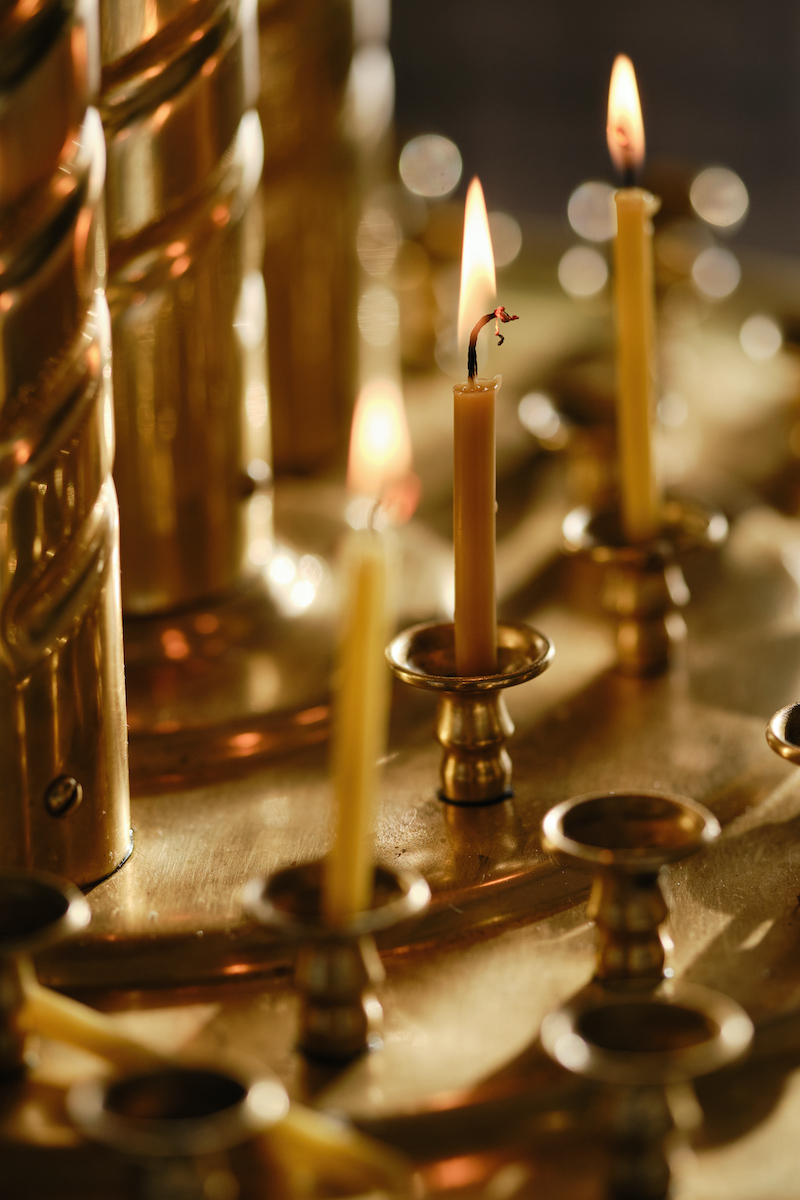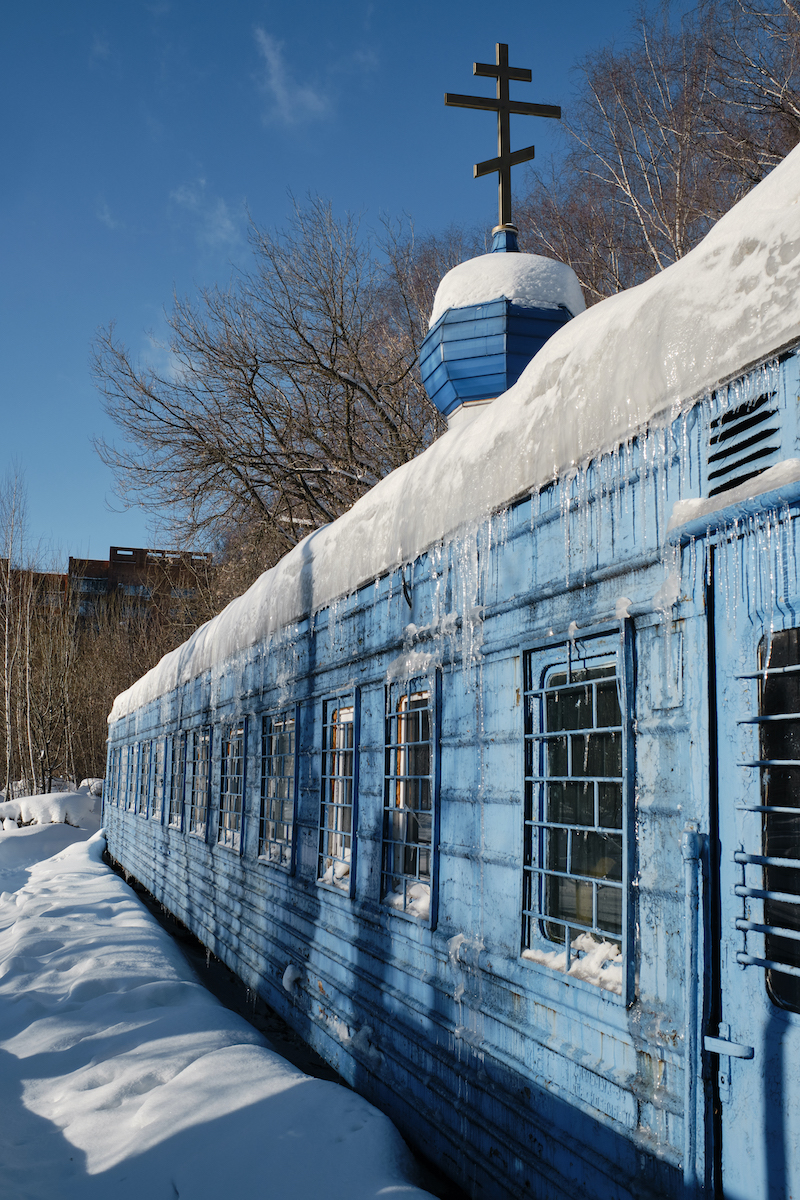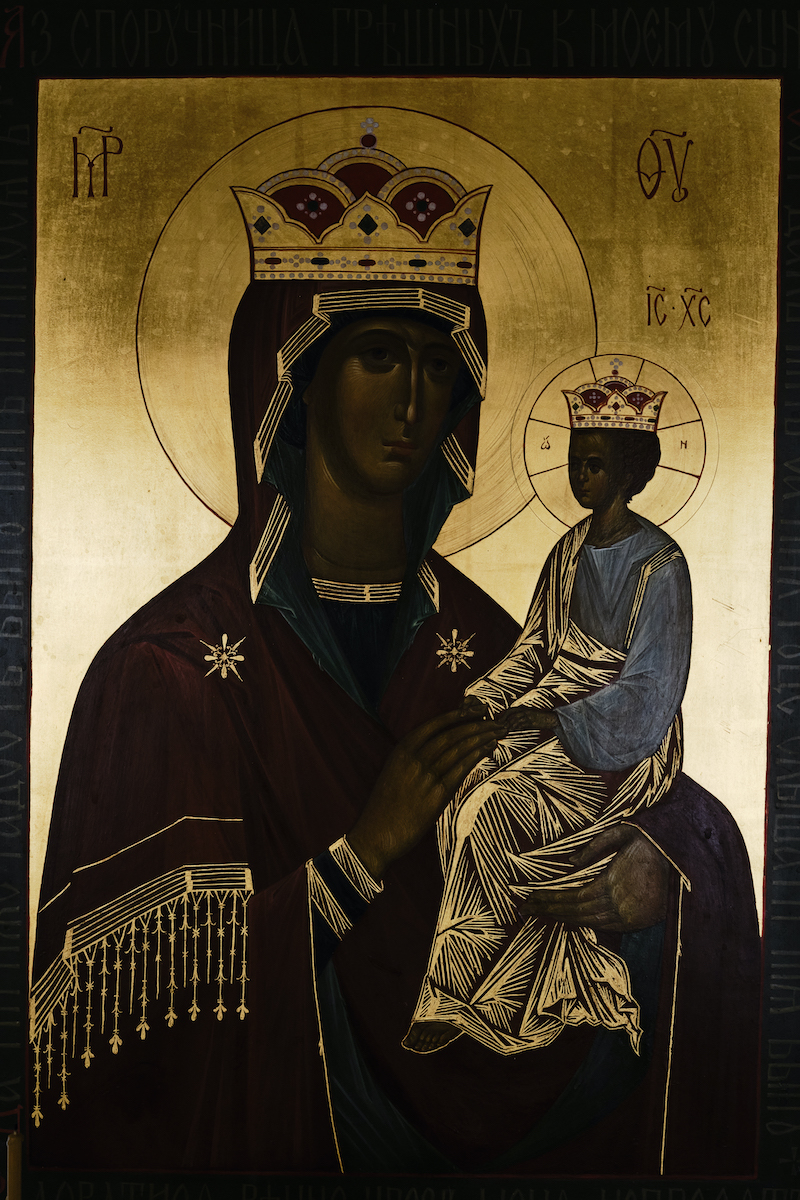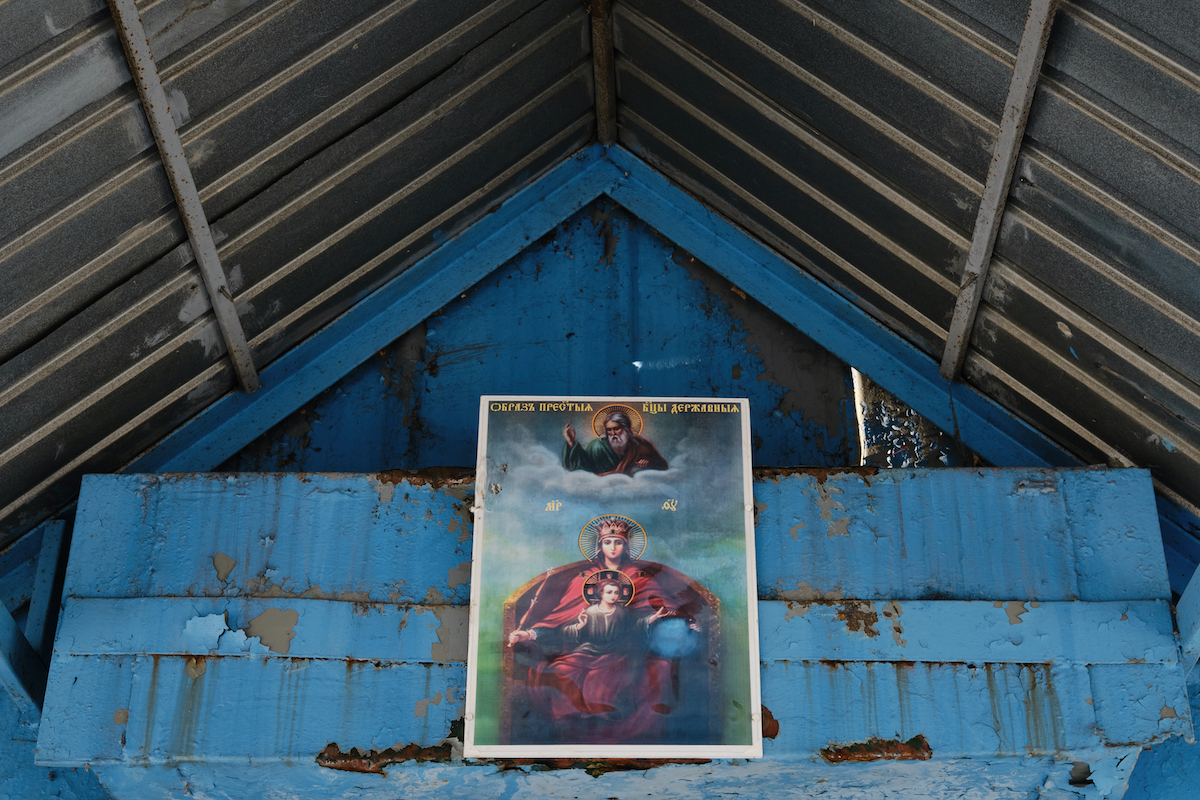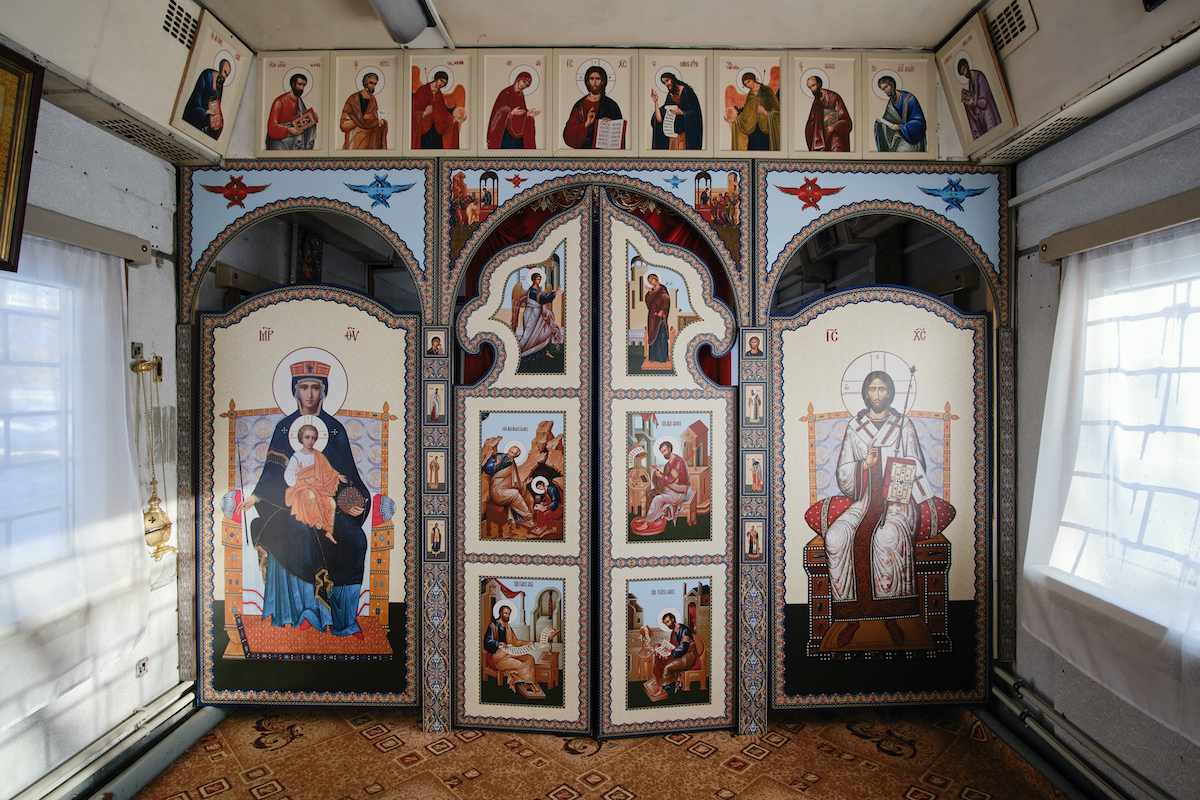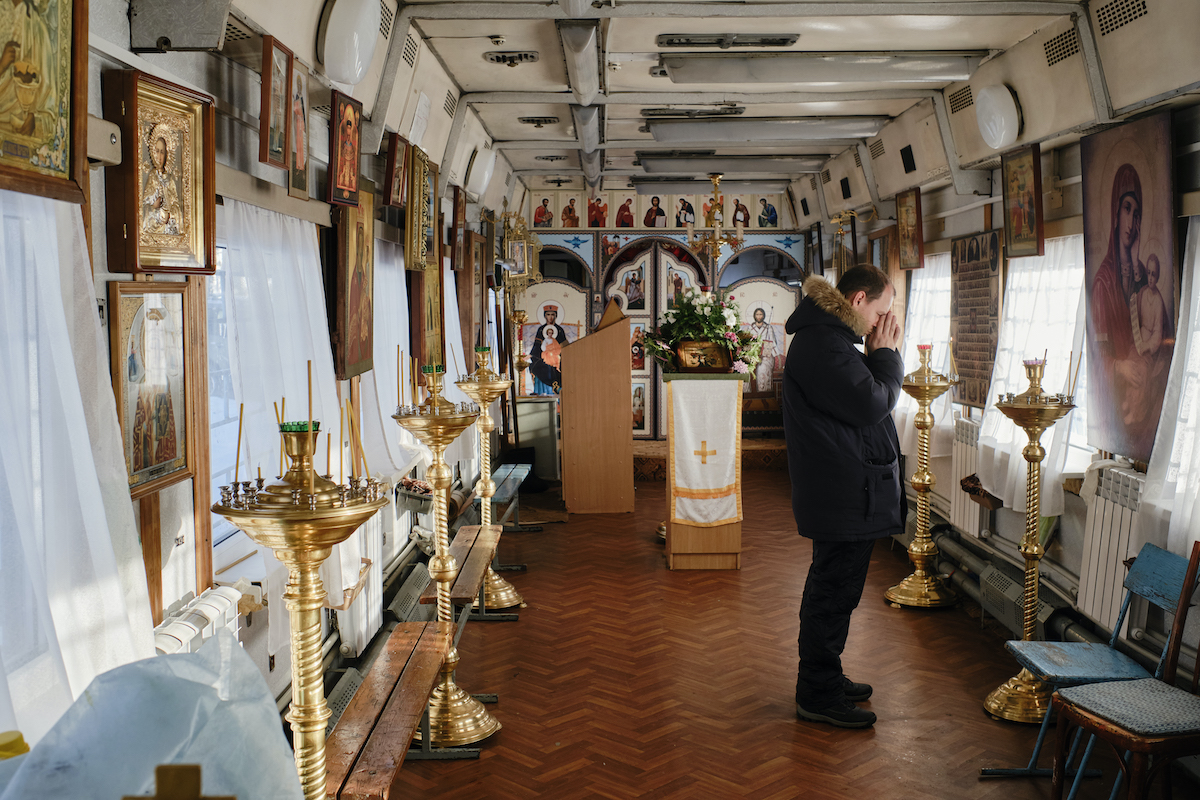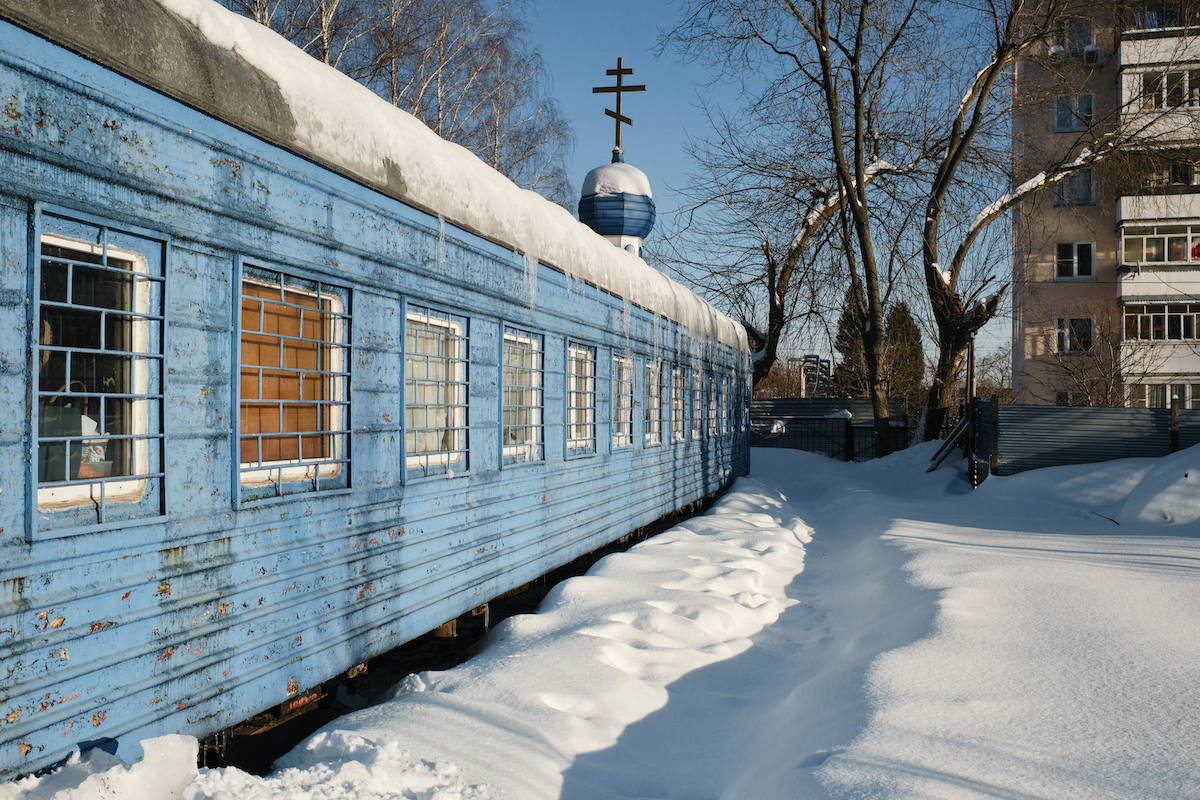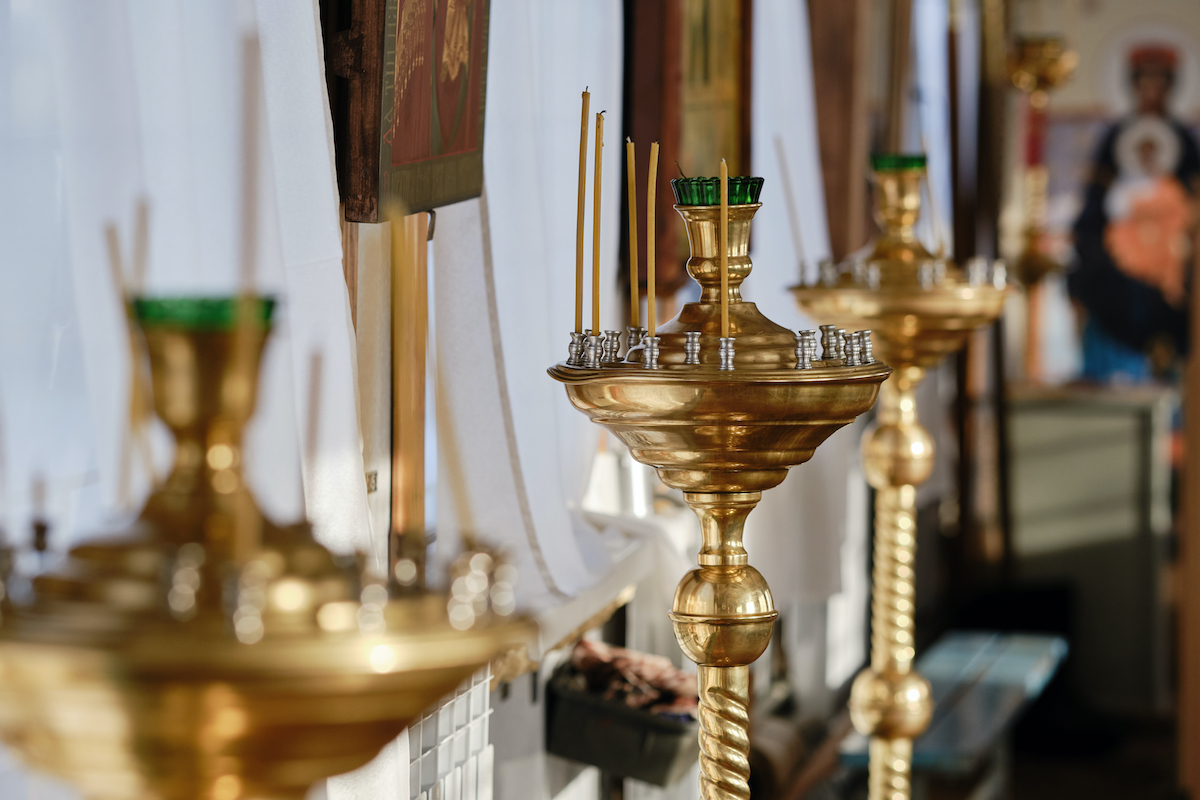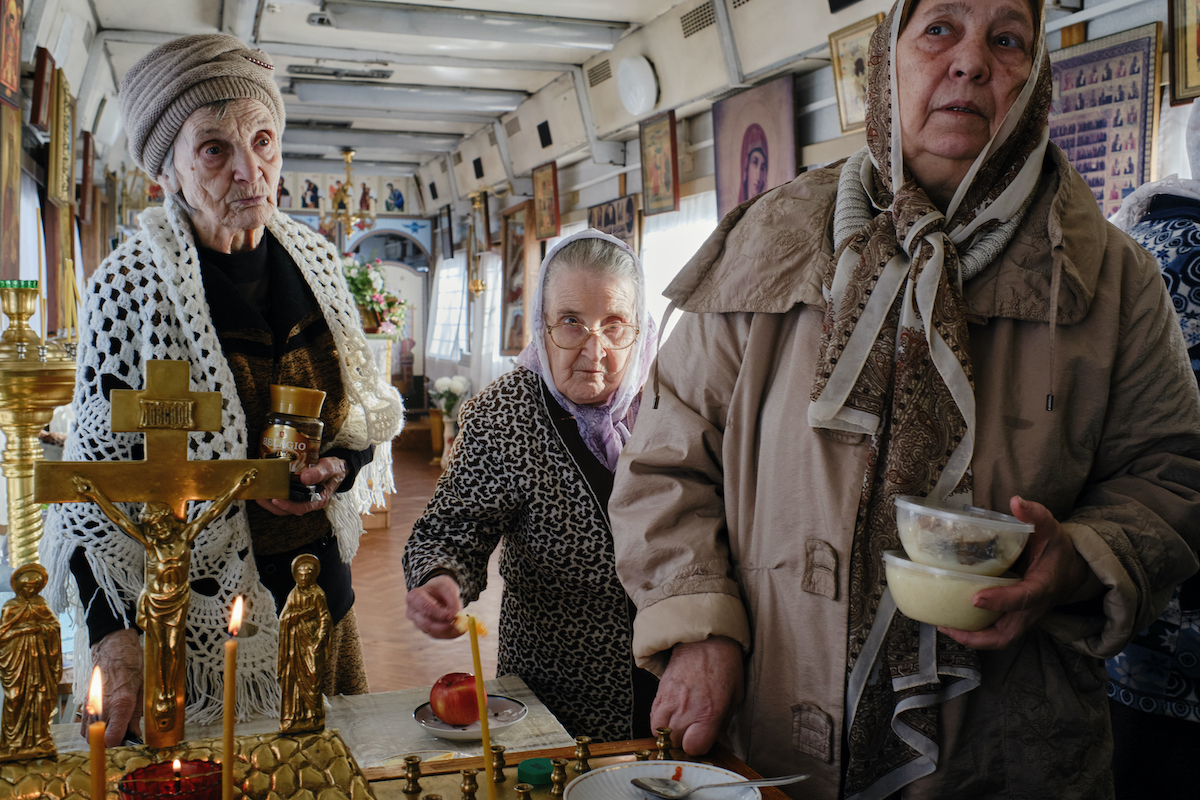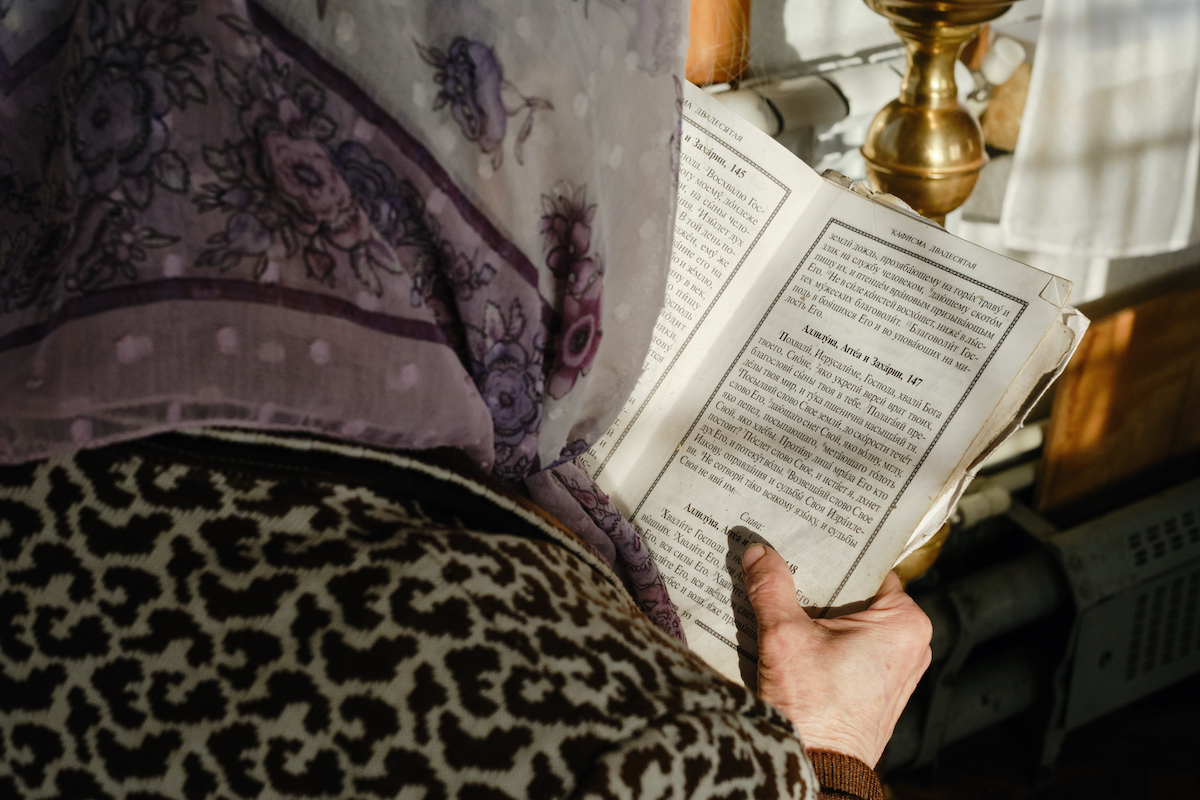Build it and they will come: the congregation who created their own church in a former train carriage
The clatter of long distance trains and the intricately-decorated interiors of Orthodox churches have both come to represent a romanticised side of Russian life. In the city of Nizhniy Novgorod, both elements are combined into one. Here, the local community has transformed an abandoned train carriage into a place of worship, maintaining their DIY chapel independently for the last 15 years all by themselves. Their devotion has been captured by local photographer Ilya Bashakov, who took images of the church and its parish.
In Russia, the Orthodox Church has experienced a resurgence following years of state-sanctioned atheism in the USSR. There has been a massive uptick in church building, and newly-erected onion domes can be seen across Moscow’s quickly-gentrified suburbs — the glittering spires tempting in new worshipers. Yet religious developments have also sparked controversy, including a recent case of Yekaterinburg, where locals condemned the building of a new Orthodox Cathedral as an excuse for developers to also build a large shopping complex. In Nizhniy Novgorod, worshipers petitioned officials to build a church, but construction never began, with clergy struggling to find the “right site” for the building.
The idea of building a temple here, in this particular remote and neglected neighbourhood of Nizhniy Novgorod, appeared in the early 1990s. Legend has it that a woman clad in white miraculously appeared on the site and called for a church to be erected. Local people, deeply moved by the event, then joined forces to secure a semi-ruined building on the site of a former military base to be turned into a place of worship. Although the Orthodox Church gave the project its blessing, it could not provide funding, leaving parishioners to fundraise over the course of two years to finally open the temple in 1996. But in 2005, a construction company reclaimed the land for a new, high-rise development. Worshippers were pushed to move the church into an abandoned train carriage, donated by the state-owned Russian Railways.
Photographer Ilya Bashakov is an atheist, but frequently visits and photographs churches, drawn by his own curiosity. He spotted the carriage-cum-church almost ten years ago, but only ventured inside after being commissioned to shoot the temple by local lifestyle magazine The Village two years ago. “The atmosphere inside was serene and welcoming. The old ladies volunteering in the church were friendly and allowed me to take photos for as long as I needed,” Bawakov remembers.
The parish has no designated priest, so older, female volunteers maintain the temple and its spirit. Inside, the decor is modest and homemade: there are none of the golden icon frames seen in grand Orthodox churches. In many places, remnants of the structure’s previous life are still visible in signs, or the marks where seats once stood. The parish’s greatest pride is its choir, which can be heard at services. Although the carriage has a capacity of just 20 people, it attracts many worshippers from the surrounding area — including cadets from the local police academy, who prefer the temple’s more humble design compared to the chapel on campus.
For now, the church is still funded by donations, with parishioners pooling funds to ensure the church stays open — and heated — between 9:00 to 18:00 each day, even in winter.
Aside from the comfort it provides to its congregation, the church can be seen as an example of true grassroot religious activism in Russia — in contrast to the religious imposition sometimes seen in Russia’s classrooms or halls of government. While the church may not gleam like Moscow’s much-lauded new temples, such grassroot efforts prove that faith rises beyond the material.
